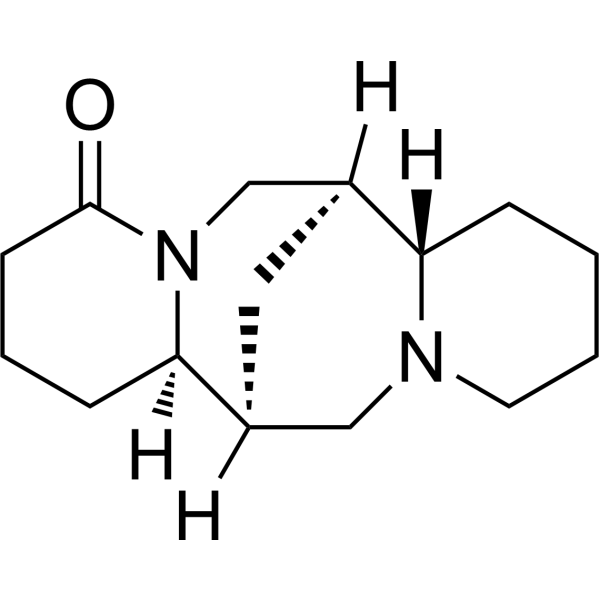
Lupanine
CAS No. 550-90-3
Lupanine( —— )
Catalog No. M30999 CAS No. 550-90-3
Lupanine has a weak sedative effect on the central nervous system, interaction with specific drugs used for treatment of the CNS and for analgesic activity. Lupanine improves glucose homeostasis by influencing KATP-channels of pancreatic beta cells.
Purity : >98% (HPLC)
 COA
COA
 Datasheet
Datasheet
 HNMR
HNMR
 HPLC
HPLC
 MSDS
MSDS
 Handing Instructions
Handing Instructions
| Size | Price / USD | Stock | Quantity |
| 5MG | 537 | In Stock |


|
| 50MG | Get Quote | In Stock |


|
| 100MG | Get Quote | In Stock |


|
Biological Information
-
Product NameLupanine
-
NoteResearch use only, not for human use.
-
Brief DescriptionLupanine has a weak sedative effect on the central nervous system, interaction with specific drugs used for treatment of the CNS and for analgesic activity. Lupanine improves glucose homeostasis by influencing KATP-channels of pancreatic beta cells.
-
DescriptionLupanine has a weak sedative effect on the central nervous system, interaction with specific drugs used for treatment of the CNS and for analgesic activity. Lupanine improves glucose homeostasis by influencing KATP-channels of pancreatic beta cells.
-
In Vitro——
-
In Vivo——
-
Synonyms——
-
PathwayOthers
-
TargetOther Targets
-
Recptor——
-
Research Area——
-
Indication——
Chemical Information
-
CAS Number550-90-3
-
Formula Weight248.4
-
Molecular FormulaC15H24N2O
-
Purity>98% (HPLC)
-
Solubility——
-
SMILES——
-
Chemical Name——
Shipping & Storage Information
-
Storage(-20℃)
-
ShippingWith Ice Pack
-
Stability≥ 2 years
Reference
molnova catalog



related products
-
Methyl cellulose
Methylcellulose is a natural polymer that gels on heating.?Methylcellulose is not toxic.
-
Murepavadin TFA
Murepavadin (TFA) is a 14-amino acid cyclic peptide that is a potent, specific antibiotic used to treat bacterial infections caused by Pseudomonas aeruginosa.Murepavadin (TFA) targets the LPS transporter portin D.
-
HIV-gp120- Fragment ...
HIV gp120 308-331 is HIV antigen fragments, that conjugates with keyhole limpet hemocyanin (KLH) and generates specific anti-HIV antibody.



 Cart
Cart
 sales@molnova.com
sales@molnova.com


